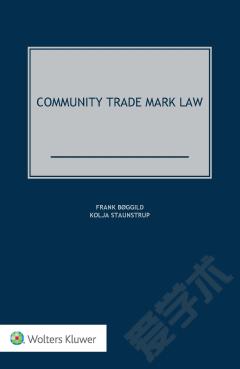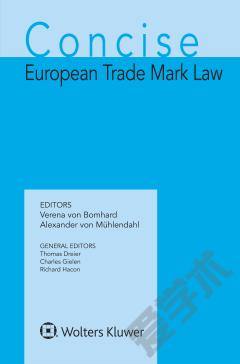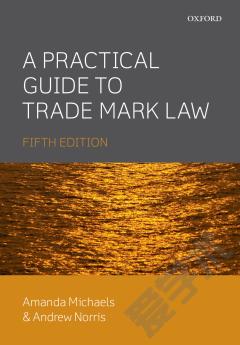The Legal Aspects of the Community Trade Mark
This book is a practical guide to the legal aspects of the Community trade mark, which is an intellectual property right created by a European Council Regulation of December 1993, and which entered into force on 1 April 1996. The main attraction of the Community trade mark is that it enables an applicant to obtain and maintain, with only one registration, trade mark protection throughout the 15 Member States of the European Union (rather than having to obtain and maintain the registration of essentially the same trade mark in each of those countries). In other words, the Community trade mark offers one-stop-shopping; the proprietor of a Community trade mark is able to enjoy exclusive rights of use at a significantly reduced cost in order to enjoy comparable rights simultaneously throughout the European Union pursuant to the traditional country-by-country or international registration systems.The Community trade mark system is administered by the Office for Harmonisation in the Internal Market (Trade Marks and Designs) (OHIM), which is an agency of the European Union. The Community trade mark system has been surprisingly successful since its inception; it is expected that, by the end of the year 2000, there will have been approximately 200,000 applications for a Community trade mark.The aim of this book is to describe how the Community trade mark system works and what , procedures it follows, as well as to draw attention to issues of potential concern for any Community trade mark proprietor. The text is thus anchored on the European Union Regulations which set out the rules for the Community trade mark system, and then critically analyses how those Regulations have so far been applied in practice. This analysis notably involves an examination of the administrative practices developed by the OHIM and its various divisions in respect of the Community trade mark, including a detailed review of the case law developed through early September 2000 by the Boards of Appeal of the OHIM. As it is possible to challenge decisions of the OHIM before the Court of Justice of the European Communities, this analysis also incorporates a study of the case law developed by that Court either in respect of, or which is otherwise relevant to Community trade marks.
{{comment.content}}








 京公网安备 11010802027623号
京公网安备 11010802027623号